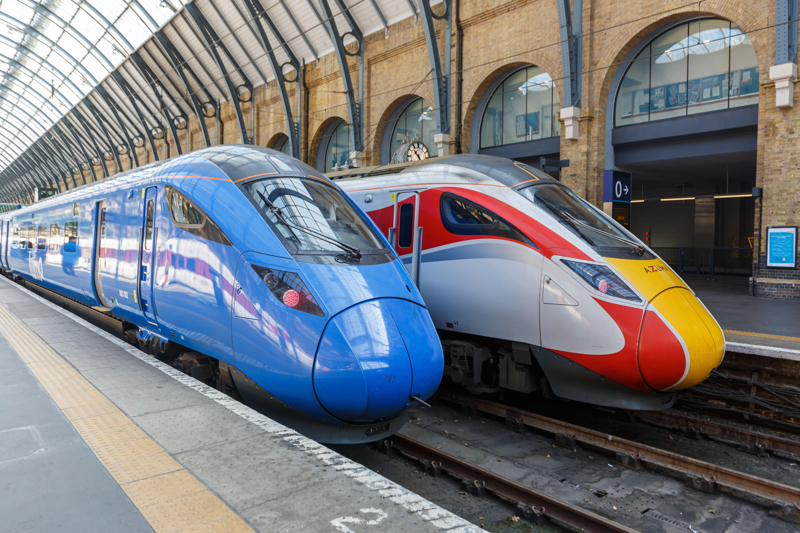
FirstGroup has defended the role of open access on the East Coast Main Line after a report suggested LNER could lose out on £1.1 billion of revenue over the next decade.

FirstGroup has defended the role of open access on the East Coast Main Line after a report suggested LNER could lose out on £1.1 billion of revenue over the next decade.
The public sector-authorised report, seen by the Department for Transport, approximates that open access revenue from 2006-2025 was £628.2m and LNER would have made £562m (89.5%) of that additional revenue without those firms running.
Calculations suggest LNER would have had at least 82% of open access revenue between 2007 and 2021, with that figure climbing to above 90% from 2022 onwards.
Seen by RAIL, the report has said annual revenue abstraction did not exceed £40m until the arrival of Lumo in October 2021, an operator it said has had a “detrimental impact” on the state operator’s revenue stream.
In one example, the report estimates that LNER would have earned 95.7% of open access revenue in 2025 without Lumo.
RAIL understands that LNER required a subsidy of £132m in 2023/24 at a time when ECML open access revenue was around £150m
They said LNER “traditionally made a premium to the Treasury that has gone back to the government and helped fund other operators”, and that without open access it “would have been back at the position of making money”.
The report focuses on markets between King’s Cross and seven stations served by LNER and at least one other open access operator. They are Grantham, Retford, Doncaster, Wakefield, York, Northallerton, Newcastle, Morpeth and Edinburgh.
It calculates revenue from TOC-specific tickets and works on the assumption that LNER’s service would be the same if these operators did not exist, acknowledging fewer passengers would travel by rail and that those who use open access operators would use LNER instead.
East Coast Main Line market growth
FirstGroup has long claimed that its Hull Trains and Lumo operations have grown the size of the ECML market.
A Winder Phillips (WP) report it commissioned (published in January) said LNER’s service had “thrived” since Lumo’s arrival, with the latter generating six million new rail journeys since starting in 2021.
Stating that “nearly half of all journeys on this route are now made by rail (up from one-third in 2019)”, it went on to say overall London-Edinburgh rail revenue has risen 55% between 2018/19 and 2023/24, compared to 1% between London and Glasgow.
“This indicates there has been no net abstraction of LNER revenue by Lumo since its services were introduced. Instead, its emergence has supported wide rail growth on this flow,” the WP report said, which also acknowledged West Coast Main Line challenges that have affected growth.
Meanwhile an Office of Rail and Road-commissioned report by Systra (published in December 2024), found Lumo’s Not Primarily Abstractive score from Newcastle to London was 0.89, well above ORR’s baseline of 0.3.
Sytra said this suggested Lumo services were “largely generative” but added a caveat that analysis spanned the COVID pandemic.
Martijn Gilbert, First Rail’s Managing Director, Open Access, expressed surprise at the timing of the report after 25 years of Hull Trains and four of Lumo.
While admitting he hadn’t seen the report, he said open access had “contributed to the accelerated recovery and growth on the ECML”.
“We have always set to add value to the wider rail market,” he said.
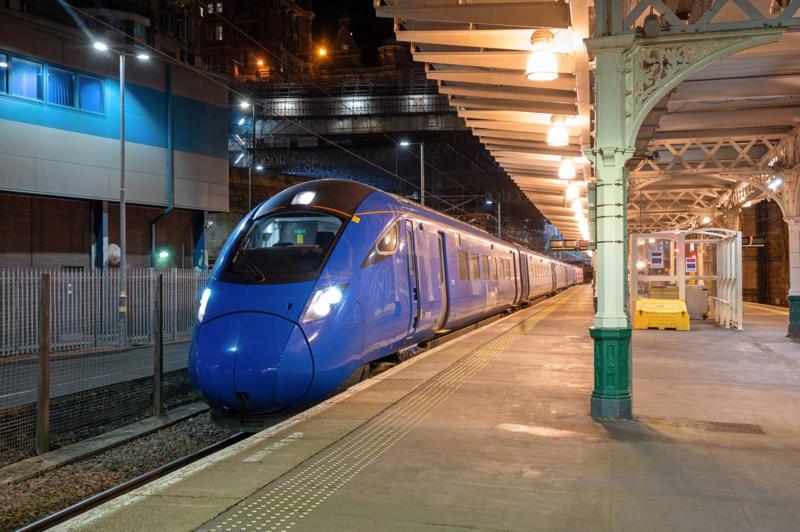
Gilbert said he has “been very complimentary of the LNER service”, but insisted Lumo had a different product.
“It’s not First Class, it’s not Standard Class, it’s Lumo Class. That offer is very different to LNER. We are targeting a low-cost market. The fundamental focus has always been modal shift form air to rail.”
Commenting airlines accept competition on the same leisure routes, he described it as “illogical” that rail leisure travel was being treated differently, and Systra’s report “demonstrated open access out-performed projections”.
FirstGroup said: “Open access operators on the ECML have grown demand and market share in recent years, through specific targeting of air travellers, a new and improved choice for customers and providing more trains to more destinations, especially at early and late times of day – the only paths available.
“It’s therefore disappointing that those opposed to open access should claim it is detrimental to the taxpayer when LNER and its predecessors had many years to make similar changes but didn’t do so, and it took open access operators to make these changes for the benefit of customers.
“There is also no guarantee that LNER would keep service levels or service patterns that open access operators currently provide as we have seen LNER withdraw from destinations such as Stirling and Glasgow within recent months; locations Lumo currently has ambitions to serve.”
One public sector source told RAIL the rail market has grown everywhere on the ECML and dismissed suggestions open access had grown the market.
RAIL was told LNER flows are above 140% of pre-COVID levels apart from Edinburgh-London, which is at 103%, even though the overall passenger volume of that route is also above 140% compared to before the pandemic.
They said the Jacobs report was to give the public sector “a real answer” to claims made by open access operators that they “don’t cost the taxpayer any money”.
While they accept the idea of running to destinations such as Hull or Sunderland, they said there were a “whole load more questions when running on the entire line that has services from that franchise”.
ECML services
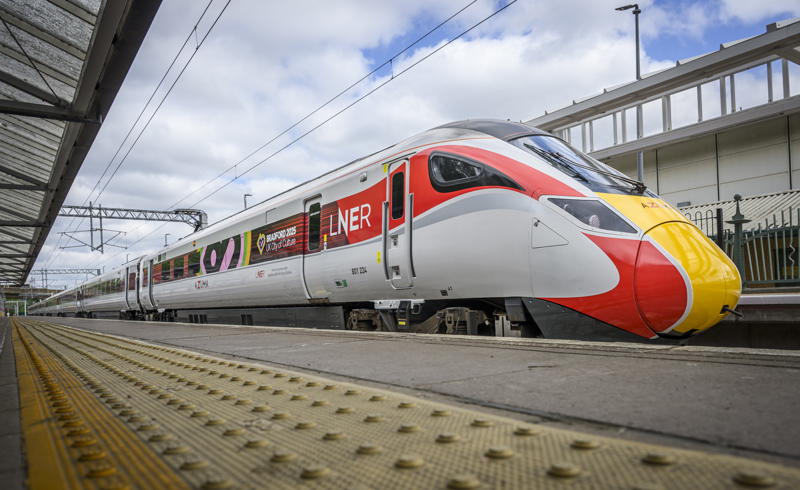
The new ECML timetable in December will include an additional hourly LNER service between London and Newcastle, something the public sector source said would “finally” put the operator back to where it thinks it would be without open access, financially.
However, there are concerns within LNER that Lumo could “wipe out the money hoped to be paid to the Treasury”, and “stop a return to profit” if it’s allowed to run ten-car services instead of five.
FirstGroup announced an order for new Lumo sets trains in December. Some Hull Trains services already run as ten-car trains.
LNER also increased its Bradford Forster Square-King’s Cross offering from two daily services to seven from May 19. Grand Central currently serves Bradford Interchange with four trains and has applied to the Office of Rail and Road to add two more.
The report focuses only on revenue abstraction and does not mention infrastructure charges. Nor does it explore wider economics of open access serving new destinations.
LNER paid track access charges £4.07, £4.44, £4.87 and £4.51 per train mile in each of the years between 2021/22 and 2024/25.
Meanwhile some open access operators pay an incremental infrastructure cost charge, which involves paying nothing in their first two years of operation, before rates rise to 25% in year three, 50% in year four and 100% in year five.
Having paid nothing in 2021/22 and 2022/23, Lumo paid £1.30 per train mile in 2023/24, £2.60 in 2024/25 and is paying £5.20 in 2025/26.
It is the only open access operator paying this charge.
Open access operators also argue their services provide wider benefits.
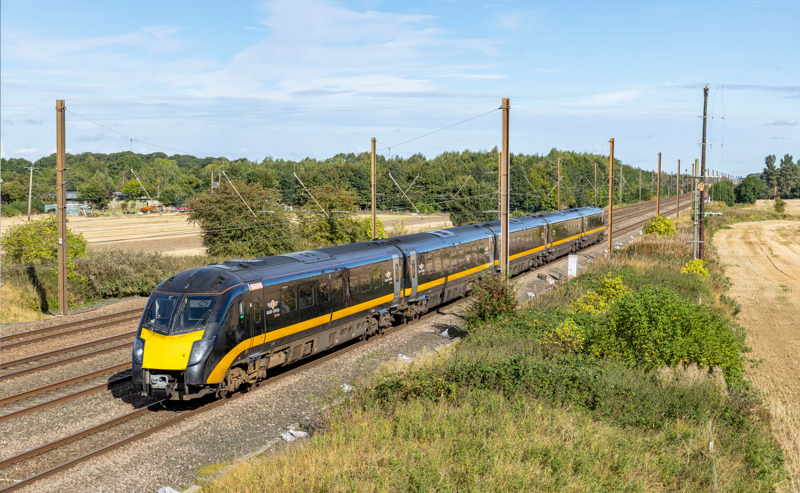
Chris Brandon, Director of Grand Central said the firm had a “proud history of connecting towns and communities that have been consistently underserved”.
“By making better use of available capacity on the network, we are providing customers with journey options that wouldn’t otherwise be available, supporting regional economies and the taxpayer, and encouraging even more people to leave their cars and to travel sustainably on public transport.”
One industry source queried why “a publicly owned train operator is spending tens of thousands of pounds on consultant reports attacking successful, subsidy-free operators”.
They added: “Open access trains exist only to serve passengers, are driving demand across the network and more than paying their own way. This is exactly why open access operators should be allowed to thrive under the forthcoming railway reforms, with an independent regulator ensuring competition on the network for passengers.”
However, the public sector source said the report was “all about the taxpayer” and LNER “doing its best to make money for them”.
Login to continue reading
Or register with RAIL to keep up-to-date with the latest news, insight and opinion.

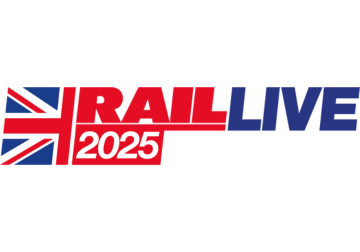
















Login to comment
Comments
No comments have been made yet.